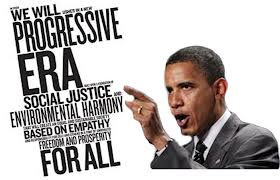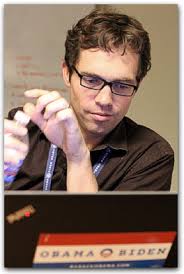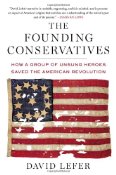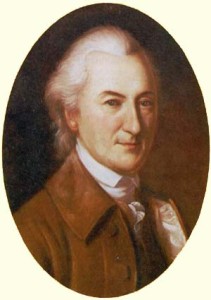Search Results for "A Crucible Moment"
The Crucible of Change
A Crucible Moment: College Learning & Democracy’s Future is a report produced by the National Task Force on Civic Learning and Democratic. Engagement. The Task force was appointed and funded by the Department of Education, and the White House endorsed the subsequent report. It carries forward Barack Obama’s 2008 campaign vow to “transform†the nation, and Secretary of Education Arne Duncan’s 2013 pledge to do the same to education.
A Crucible Moment (ACM) is available on the Internet and should be widely read, but the chances of that aren’t good. The national media ignored ACM just as it did Common Core. Beyond the rarified world of leftist academics, few Americans are aware of its existence and fewer still have read it.
What Would The Founders Think is indebted to Academic Questions, a journal of the National Association of Scholars, for bringing ACM to our attention (September 2012 issue).
Space does not permit a comprehensive review of A Crucible Moment. Instead, excerpts are provided for readers to draw their own conclusions, along with insightful comments (drawn from the pages of Academic Questions), contesting ACM’s version of civics education, and occasional outbursts from this blogger.
Out with the Old, in with the New
The justification for the Task Force, and the urgency with which ACM is presented, is that the future of democracy depends upon restoring civic education to classrooms at all levels. Not mentioned is that leftist academics are responsible for its enfeebled state.
Throughout the 1980s and 1990s especially, the left largely held that the aim of education was a defense of “multiculturalism” and, increasingly, embracing and achieving “diversity.” Education was thought to move us beyond mere “civics,” and rather to be the avenue of liberation from what was considered at once a narrow emphasis upon American history and institutions and the dangerous endorsement of a set of shared national ideals.  “An Unbalanced Crucible,†Patrick J. Deneen
Having essentially dismembered the old civics, the Left now champions a replacement, albeit in a form that bears no resemblance to its predecessor.
Civic education, as it has been understood since the founding, is very different from its reincarnation in A Crucible Moment.
A proper, rigorous, and liberal (in the classical sense) course in civic education doesn’t tell students what social justice is and require them to embrace and practice it. It has students read classical contemporary and conflicting conceptions of social justice and equips students to make up their own minds responsibly and rationally. “Civic Literacy,†Mark Bauerlein
The new civics is not so much a curriculum as it is a call to action. Deneen points out:
In its stated set of forceful endorsements of particular outcomes, the report would forestall the actual activity of civic life by importing substantial goals into the educational process, with the expected result of uniform political opinion. Rather than seeking robust civil civic discourse – even disagreement – it smuggles substantial commitments into its “educational” activities, thereby effectively seeking to forestall actual civic activity.
The 69-page report is best described as the operating manual for inculcating American youth with the progressive ideals of egalitarianism, globalism and “planetary stewardship.â€
This supposedly “broad coalition†that produced a “National Call to Action†(26), though, never entertains the possibility that American civics education is not about alleviating “inequalities.†The redistributive agenda behind “sustainability†is an assumed good. There is no acknowledgment that scientists disagree about climate change, nor that the free market, despite its fluctuations (“volatilityâ€), is preferable to planned economies. The fact that students are to—in their words—“do democracy†(13–14) through  “community service, collaborative projects, and consensus-building,†reveals that the new “norms†of scholarship are decidedly anti-intellectual. “Beyond Reason†Mary Grabar
The Agenda
A Crucible Moment calls for transformations necessary for this generation. A daunting one is to eliminate persistent inequalities, especially those in the United States determined by income and race, in order to secure the country’s economic and civic future. But the academy must also be a vehicle for tackling other pressing issues – growing global economic inequalities, climate change and environmental degradation, lack of access to quality healthcare, economic volatility, and more. To do that requires expanding student’s capacities as civic problem solvers using all their powers of intellect and inventiveness. (ACM19)
If indeed we seek a democratic society in which the public welfare matters as much as the individual’s welfare, and in which global welfare matters along with national welfare, then education must play its influential part to bring such a society into being…(ACM 26)
Although the definition of civics is “the study of the rights and duties of citizenship, the nation itself is rarely mentioned.
…… There is much talk of “local and global generative partnerships” and “transformative” alliances, but the United States itself is oddly absent. This is not a civics that has as one of its aims the fostering of a national loyalty. “Patriotism” is another word that never appears…. “Civics Without a Country,†Diana Schaub
Transforming Higher Education
Among other directives, universities are to foster a campus-wide “civic ethos.â€
The new civic education requires more than civic action, it requires “right†attitudes. The authors envision college graduates “who approach the world with empathy, and who are ready to act with others to improve the quality of life for all.”
Colleges and universities need to provide far more enabling environments than are now in place through which students can expand their critical abilities to make judgments about issues and actions, their powers to investigate and analyze, and their wisdom and passion to seek justice with keener insight into how to determine what is just, for whom, and under what circumstance. (Emphasis WWTFT.)(ACM 31)
Apparently, justice is no longer to be blind and the rule of law is insufficient for the “greater good.†But none of the above is left to chance or choice. “Civic learning†is to be a component of “quality standards at all levels.â€
We are not suggesting that colleges implement a single required civics course. That would hardly be sufficient. Rather, we are calling on colleges and universities to adopt far more ambitious standards that can be measured over time to indicate whether institutions and their students are becoming more civic – minded. (Emphasis WWTFT) (ACM 14)
Thus conformity will be enforced at every level of education bureaucracy.
Review and strengthen the federal standards that govern accreditation to ensure that preparations for democratic citizenship become integral rather than optional in educational institutions. . (ACM 34)
Review state and/or state system learning outcomes and program standards for post-secondary study to ensure all students will be prepared for democratic participation and for knowledgeable involvement in the global community. (Emphasis WWTFT)(ACM 34)
Review academic standards for regional national and specialized accreditation to ensure they address preparation for democratic participation in the global community, in ways appropriate to its educational mission. (Emphasis WWTFT)(ACM 34)
No Stone or Course Unturned
ACM provides examples for spreading civic education across disciplines such as inserting:
… political voice in a political science course, the ethical and moral dimensions of a world citizen in a Holocaust literature course, the civic “response – ability” in a communication course, or the practical civic consequences of numeracy in a math course. (ACM 53)
 Suggestions for incorporating political action are included as well. Among them is student involvement with The One Campaign to allocate at least 1% of the GDP to alleviate global poverty. (ACM 45) Incorporating extra curricular organizations is also suggested.
Suggestions for incorporating political action are included as well. Among them is student involvement with The One Campaign to allocate at least 1% of the GDP to alleviate global poverty. (ACM 45) Incorporating extra curricular organizations is also suggested.
Evaluate the feasibility of establishing a Civic Action Corps at our nation’s colleges and universities that functions like ROTC, with scholarships, focused courses, and expectations for public service after graduation…(ACM 37)
Every student’s records will include compliance/non-compliance with the new civics. The latter would be consequential for education advancement and careers because civics enforcement does not end with graduation. Employers are urged to:
Include key civic and ethical competencies as requirements for hiring (ACM 40)
And if these competencies, or lack thereof, skew students’ dossiers, unwitting employers may comply without realizing it.
Tracking Students
Monitor progress in students’ civic development and support research on the correlation between student engagement and civic learning and other priorities, including persistence, completion, in preparation for further study and careers. (ACM 35) (Emphasis WWTFT)
Include civic learning in U. S. and global contexts as expected student learning outcomes in public reporting frameworks – national, state or state system, and campus – specific. (ACM 35)
Disaggregate the data on participation in civic learning programs and pedagogy is to ensure students from all backgrounds are participating. (ACM 35)
Report regularly on the levels of civic and democratic learning, set national and state goals for student achievement in civic learning, and make such outcomes measurable expectation of schools and post secondary education in public, private, and for-profit degree-granting institutions. (ACM 36)
 “Give me four years to teach the children and the seeds I have planted will never be uprooted.†(V. Lenin)
“Give me four years to teach the children and the seeds I have planted will never be uprooted.†(V. Lenin)
Without K – 12 education laying the foundations for civic responsibility and developing students’ understanding of democracy’s history and principles any hopes of raising national civic literacy and civic agency are likely to be undermined, both for college students, and even more so, for high school graduates who may never enroll in college. (ACM 28)
To Incorporate K-12 in the civic education dragnet, universities are to:
Work with traditional and alternative teacher preparation programs to insure newly credentialed K – 12 teachers received the necessary training to advance civic knowledge, skills, values, and action at what ever level they will teach and across differing subject areas (ACM 38)
Coordinate with higher education, parents, policymakers, and other locally influential groups to form strong alliances that will chart students growth in civics and history using state accountability data systems; secure necessary funding to support civic learning in schools; and elevate civic learning to the prominence it deserves. (Emphasis WWTFT)(ACM 38)
Other goals for the K-12 system include:
Providing teacher preparation programs to ensure K-12 teachers are prepared to advance civic knowledge, skills, values, and action, whatever level they teach and across all subject areas. (ACM 38)
Transforming America
Civic learning needs to be an integral component of every level of education, grammar school through graduate school, across all fields of study. It should also be an important part of our informal educational practices for young people and adults, woven into every community and region in the nation. (ACM 69)
 ACM’s requirements to insert “civic learning†in state and national standards at every level and across all subjects should dispel confusion about the mission of Common Core Standards. The proviso that students, from elementary school on, are to be tracked “using state accountability data systems to chart students’ growth in civics and history†reveals the importance of Common Core’s State Longitudinal Data System (SLDS) and why third parties need access to personally identifiable student information. It’s the only way to ensure that no student escapes, or as ACM explains: “to ensure students from all backgrounds are participating.†This blogger contends that Common Core and SLDS provide the infrastructure for ACM.
ACM’s requirements to insert “civic learning†in state and national standards at every level and across all subjects should dispel confusion about the mission of Common Core Standards. The proviso that students, from elementary school on, are to be tracked “using state accountability data systems to chart students’ growth in civics and history†reveals the importance of Common Core’s State Longitudinal Data System (SLDS) and why third parties need access to personally identifiable student information. It’s the only way to ensure that no student escapes, or as ACM explains: “to ensure students from all backgrounds are participating.†This blogger contends that Common Core and SLDS provide the infrastructure for ACM.
The agenda of A Crucible Moment: College Learning and Democracy’s Future “funded,” and “nurtured” by the U. S. Department of Education, is nothing less that an attempt to implement a “transformation†of America by transforming current academic norms about what counts as scholarship…
Let this document be remembered, as the federal government’s official announcement of the death of true scholarship and independent thought…
When reading, contemplation, study, analysis, discussion, debate, writing are replaced by “doing” we can congratulate ourselves on going beyond even the Soviet Union’s use of education for indoctrination. It will be the final blow to an educational system already corrupted by radicalism… “Beyond Reason,†Mary Grabar
Perhaps most disturbing is the number of post secondary institutions already practicing what A Crucible Moment preaches.
The White House event on January 10, 2012, celebrating the release of A Crucible Moment, also launched the American Commonwealth Partnership, a new collaboration between national organizations, colleges and universities, “known for their commitment to advancing civic learning and democratic engagement.â€
It is possible, even probable, that some organizations allied with the American Commonwealth Partnership are misled by vague generalities such as “civic learning,†“democratic engagement†and “building 21st century competencies.†The definitions of these terms having been buried in the turgid prose of manifestos like ACM, which are written and only read by the cognoscenti of progressivism. So It appears that Obama’s “transformation†is well advanced.
Meanwhile, what used to be called the “silent majority,†is not so much silent as somnolent. Mark Bauerlein sounds the alarm, for if they do not awaken soon, when they finally do, it will be in a very different America.
… (W)e need an aggressive stance on the part of critics. When one side cast an open issue as a pat truth, it is futile for the other side to reason against it in standard academic fashion (for instance, in scholarly essays and conference papers). It is doubly futile when the one side controls the academic sphere and its forums. A more vigorous opposition carries the point into the public sphere in newspaper op-eds, magazine stories, media interviews, and attention – getting symposia that warn against the biased pedagogy of A Crucible Moment, “Essential learning outcomes,†etc. The stakes have never been higher as public agencies and public debts and obligations press ever more upon private life and wealth. These documents are, ultimately, expressions against private enterprise and personal conscience and they should be stopped.
References
A Crucible Moment http://imaginingamerica.org/wpcontent/uploads/2012/01/Crucible_FINAL_web.pdf
Patrick J. Deneen is associate professor of political science at the University of Notre Dame, Notre Dame, IN.
Mark Bauerlein is professor of English at EmoryUniversity, Atlanta, GA., and from 2003 to 2005 served as director of the Office of Research and Analysis at the National Endowment for the Arts.
Mary Grabar teaches English part-time in the Program in Democracy and Citizenship at Emory University and writes about education for several publications.
Diana Schaub is professor of political science at Loyola University Maryland, Baltimore, MD and a member of the Hoover Institution’s Jill and Boyd Smith Task Force on the Virtues of a Free Society
February 17, 2014 2 Comments
So Much For “State Led” Common Core Initiatives
Common Core and the SAT
Jane Robbins, author of “Uncommonly Bad†(Academic Questions, Spring 2013), reveals that one of the stated goals of the federally funded consortia creating Common Core-aligned tests and of the National Governors Association–which owns the standards– is for colleges and universities to accept a core-based test as sufficient for college entrance, no remediation required.
Robbins suggests that both the standards and requirements for college entrance would result in “a homogenized education system that smooths out the disparities in achievement by placing more emphasis on ‘critical thinking skills’ than on objective evaluation of knowledge.â€
We are almost there.Â
David Coleman, president of the College Board, recently announced that the Scholastic Aptitude Test (SAT) has been revised to align to Common Core. Before he became president of the College Board in 2012, Coleman founded Student Achievement Partners, which played a leading role in writing the Common Core standards and was funded by $6.5 million from Bill Gates.
Since Coleman is an enthusiastic proponent of the standards he shaped, it is relevant to take another look at Common Core before examining the SAT revision.
Reprising Common Core State Standards (CCSS)
The standards do not lack for critics.
Mathematics professor R. James Milgram, the only math content expert on the Validation Committee reviewing the standards, refused to approve Common Core math standards. He told the Texas State Legislature that Common Core math: “in large measure is a political document that . . . is written at a very low level and does not adequately reflect our current understanding of why the math programs in the high-achieving countries give dramatically better results.â€
The Common Core high school math curriculum is seriously truncated. It ends at algebra 2 with a few lessons in trigonometry. College freshmen will be unprepared to enroll in courses requiring pre-calculus.
As we know from Jason Zimba, one of the three drafters of the math standards, Common Core is designed to prepare students to enter community colleges and non-selective schools. He admitted that the math standards aren’t designed to prepare students for STEM (science, technology, engineering, and math) studies, but also that they’re not designed to get a student into any selective college, even in a non-STEM discipline.
Dr. Sandra Stotsky, who served on the Language Arts Validation Committee, refused to approve the standards. Among other objections, she found that they lack rigor, are NOT internationally bench-marked, and that NO research supports the stress on informational reading instead of literary study in English classes.
An article titled “An Example of Data-less Decision Making,†in the Winter 2011 Journal of Scholarship and Practice, supports professor Milgram and Dr. Stotsky’s objections – and then some.
According to Journal editor Christopher H. Tienken:1
Over 170 organizations, education-related and corporations alike, have pledged their support to the initiative. Yet, the evidence presented by its developers, the National Governors Association (NGA) and Council of Chief State School Officers (CCSSO), seems lacking compared to the independent reviews and the available research on the topic that suggest CCSS and those who support it are misguided.
The standards have not been validated empirically and no metric has been set to monitor the intended and unintended consequences they will have on the education system and children (Mathis 2010) Yet most of the nations governors, state education leaders and many education organizations remain committed to the initiative.
Tienken evaluates the arguments made by proponents of Common Core and the data they claim support CCSS. He finds both lack credibility. A few excerpts from the extensively referenced 15-page article indicate the tenor of the rest. It can and should be accessed on the Internet and read in its entirety by anyone concerned about their children’s and America’s future.
The vendors of the CCSS have a problem: They have no data that demonstrates the validity of the standards as a vehicle to build 21st century skills nor as a means to achieve the things the business leaders say will be needed to operate in a diverse global environment. The CCSS are stuck in a time warp. A curricular time machine, if you will, set in 1858…
Upon examination, the claim that CCSS address critical 21century skills is ludicrous.
We only need to look at the mid 1800s and the Lancasterian Method used in London and in some of America’s cities and the Quincy Massachusetts schools to see how the idea of standardization will play out. It did not work then and it will not work now.
The language arts and mathematics curriculum sequences embedded in the standards are nothing more than rehashed versions of the recommendations from the Committee of Ten in 1893 and the Committee of 15 in 1895; hardly 21 Century innovations….
As to the validity of Centralized Planning, the author notes that we are a nation of over 300 million ethnically, religiously and racially diverse people and concludes…
It is terribly naïve to think that all children should be made to master the same set of academic skills and knowledge and that it would actually benefit them or a country to do so.Â
 It is an Orwellian policy position that lacks a basic understanding of diversity and developmental psychology. It is a position that eschews science and at its core, believes it is appropriate to force children to fit the system instead of the system adjusting to the needs of the child.
Tienken has detected the underlying authoritarianism of Common Core. College Board president David Coleman’s remarks at the 2013 Strategic Data Project Conference validate that finding.
College Board President David Coleman
Thanks to Ann Kane at American Thinker and Dr. Susan Berry at Breitbart.com for the following account.
Coleman’s self-congratulatory statement about his role in promulgating the standards should put to rest the fiction that the standards were “state led.â€
When I was involved in convincing governors around this country to adopt these standards,†Coleman said, “it was not Obama likes them – do you think that would have gone well with the Republican crowd?â€
He went on to praise the collection of student data connected to Common Core.  He said he was eager to extend that collection by hiring members of Barack Obama’s re-election campaign who, Coleman said, “would be reaching out, as they did for the campaign, to the ’low hanging fruit,’†which he defined as low-income and Latino students. He also told the audience that other members of the re-election team would be joining the data collection initiative. Their task is to develop their “economic justice project, the Access to Rigor Campaign†aimed at profiling that low-hanging fruit.
The May 15, 2013 Ed Tech Times explained the purpose of the economic justice project:
The campaign will mobilize students to take and succeed in those AP courses for which they have potential; attend colleges where they are equipped to succeed without remediation: and explore the full range of college options available to them in order to ensure that they go to a college that is the best fit for their individual needs and academic qualifications.
Other Obama campaign veterans selected to work on common core data collection include Dan Wagner who, according to Coleman “led the Obama campaign’s use of data to galvanize a generation of low-income people to vote like they never have before;†Jeremy Bird, who will join the Access to Rigor campaign and head “field mobilization.†Bird served as â€National Deputy Director of Organizing for America and lead the Turning Texas Blue campaign which is working to organize the Latina population in that state for Democrats.
 |
 |
Ann Kane at American Thinker observed: “Coleman made it abundantly clear he will concentrate on data mining our school children’s proclivities.†She asks: “How does this intrusion into children’s privacy through more accumulation of data support Coleman’s stated goal of making students career and college ready?â€
The ideological commitment of Obama campaigners leaves little doubt that fulfilling that goal is subsidiary to their primary task. Under the beneficent claim of helping low-income and minority students, they will use common core data in the same way the Obama campaign used data to persuade “low-income people to vote like they never voted before.†Obama campaigners will do what authoritarians have always done – mold education to “transform†a nation.
SAT Revisions
To align with the standards, the vocabulary portion of the test has been narrowed. The development of a broad vocabulary developed through wide spectrum reading – integral to reading comprehension – is short-circuited by Common Core’s emphasis on informational texts. The old verbal portion of the SAT is now replaced by “evidence –based reading and writing†to assess “relevant words in context.â€
Eliminating most of the vocabulary section and making the essay optional also makes the test easier. The point scale has been reduced to 1,600 (it was 2,400 with an average score of about 1520). That alone says a great deal about the “rigor†of the standards.
Peter Wood2 (National Association of Scholars) wrote that the SAT revision should be seen first and foremost as a “rescue mission†for Common Core. Parental pressure is causing several states to reconsider the decision to participate. In addition to controversy over the quality of the standards and the leftward tilt of some Common Core aligned materials, parents have privacy concerns about the State Longitudinal Data Systems (SLDS) connected to Common Core. The more parents learn about Common Core, the more likely they are to enroll their children in charter schools, in private schools if they can afford them, or to home school. But if college entrance tests are geared to the perspectives of Common Core, being bright and well read, and taught a non- politicized curriculum may not be adequate preparation for the revised SAT. That concern will pressure private and charter schools as well as home educators to conform to Common Core.
The SAT alignment also serves two other purposes: It conceals the deficiencies of Common Core – eliminating the embarrassment of a scores comparison showing that common core students do less well than pre-Common Core students; secondly, the new SAT accomplishes the leveling (economic justice) purpose of Common Core.
Wood reminds that the purpose of the SAT and the American College Test (ACT) was to predict whether students would do well in college. That is no longer their function. The 1970 and 1980s imperatives of racial preferences and diversity trumped scores and high school grades. So in the 1990s SAT “recentered†the scoring system, blowing air into mediocre scores and blurring differences between top scorers. The CCSS-aligned SAT is a social engineering tool: A mediocre education and a simplified exam to send more students to college.
David Coleman’s remarks reveal that the SAT revision is much more than a rescue mission. It is a vital component of the plan laid out in A Crucible Moment. Inculcating students with regime-approved political attitudes is insufficient. Control of access to education, job training and careers assures continued compliance. A planned economy requires that critical jobs be filled with approved individuals. It is reasonable to think that the data collection that facilitates finding “low hanging fruit†for special treatment can also be accessed to identify and sideline dissidents by foreclosing their education and training opportunities. Similarly, despite the drive for equality, gifted students can be identified and, assuming their dossiers show them to be politically reliable, they can be chosen for a fast track and an elite university. See the earlier WWTFT article,  A Crucible Of Change to learn how it is all supposed to work.
Some defenders say that Common Core is only a baseline and that schools are free to exceed the standards. But, there are only so many hours in the school day and as they used to say on Rowan and Martin’s Laugh-in, “you can bet your sweet bippy†that what will be tested is what will be taught.
1.http://www.aasa.org/uploadedFiles/Publications/Newsletters/JSP_Winter2011.FINAL.pdf
2 NAS The SAT Upgrade Is A Big Mistake May 12, 2014
3 According to a June 2010 ACT report, the test is already aligned to Common Core: “Given the central role ACT played in providing research and evidence to support the development of the Common Core State Standards, it should be no surprise that the overwhelming majority of the Standards can and will continue to be assessed by ACT’s College and Career Readiness System.â€
March 25, 2014 2 Comments
The Founding Conservatives by David Lefer
 How a group of unsung heroes saved the American Revolution.
How a group of unsung heroes saved the American Revolution.
The author’s thesis is that, contrary to popular perception, the American Revolution was wracked by bitter and often violent struggles between left and right. That is not an impression consistent with conventional histories of the nation’s founding.
The book opens with an episode that demonstrates the author’s premise. In the fall of 1779, a group of militiamen roughly seized four merchants and dragged them through the streets of Philadelphia. The armed men, equal parts hungry and angry because of the rising price of bread, headed to the home of James Wilson. Wilson, a wealthy lawyer and a staunch advocate of free enterprise, opposed the price controls the radicals championed.
America’s leading conservatives rushed to Wilson’s defense but, in the interim, the situation had gone from dangerous to lethal. When the reinforcements arrived, the attackers had leveled canon at the door of the Wilson house. After the defenders’ volleys took militia lives, the mob fled, leaving their dead and wounded in the street.
The street fight had a seismic impact on public perception as well. Within a year, fear of the mob would lead to the decline of radical power and the ascendance of conservatism as the dominant political force in America for the next 20 years. Those two decades were among the most formative in American history, and during this time conservatives found themselves in a position to shape the new Republic, from rewriting the state constitutions and running the government under the articles of Confederation to drafting the Constitution and getting it ratified in the states.
Lefer’s book makes three main arguments. Primary among them is that the founding conservatives saved the American Revolution. Second, is that they brought capitalism to America because they were the first advocates of banking, corporations and large-scale industry in America. Third, is that modern conservatism was borne at the moment of independence and, although it parallels Britain’s, American conservatism differs because it reflects America’s unique history and culture.
In the course of his well-written and painstakingly researched book, the author acquaints readers with panoply of astonishingly talented and accomplished individuals. Beginning with John Dickinson and his powerful Letters from a Pennsylvania Farmer to the Inhabitants of the British Colonies, Lefer traces the careers and contributions of each conservative founder.
James Wilson, who studied law under Dickinson was one of America’s finest legal minds and drafted much of the Constitution. Robert Morris, who helped defend Wilson’s home during the Fort Wilson riot, served as America’s first chief justice, established the United States Navy, and personally bankrolled the Continental Army as well as much of the American economy. John Jay crafted much of New York’s Constitution, served as president at of Congress, and secured American economic interests brokering the peace treaty with Britain. Philip Schuyler, an upstate New York patrician, orchestrated the military victory that changed the course of the war. Silas Deane of Connecticut secured the French aid that kept the American army alive. John Rutledge of South Carolina almost single-handedly saved the Deep South. James Duane, Gouverneur Morris, Robert Livingston, Edward Rutledge, Carter Braxton, and many others also played pivotal roles in the Revolution. Yet, as consequential as these men were in their lifetimes, they have been largely forgotten today.
This book restores their rightful place in history. Regrettably, it is not possible to do them justice within the confines of a review. Lefer’s stirring accounts of these individuals and their contributions to the founding add color and drama to an oft told tale. Many historians, for example, have described the constitutional debates, but few have done so in as riveting a manner as this author.
Lefer calls his subjects “revolutionary conservatives.†But he could as well have designated them reluctant revolutionaries. Their initial goal was to protect colonists’ rights from an over-reaching Parliament and monarch, but remain part of the British Empire. While entreating the King to respect colonists’ liberties, they also worked to quell the radicals who wanted independence, not reconciliation.
Reluctant they might have been, but the founding conservatives were also realists who knew they had to prepare for a war they hoped would never come. And, as every school child knows, their repeated efforts to persuade the King to apply English law to English subjects were unsuccessful. By 1776, it was increasingly evident to the conservatives that Revolution was coming.
The conservatives had to decide where their allegiance lay, and it was not with the Loyalists. They were zealous defenders of American rights and committed Patriots.
By consenting to stand or fall with freedom, Dickinson, Morris, Rutledge, J, Braxton, and all their allies became America’s first true conservatives. They had passed through the final crucible. Change was inevitable, they knew, but by fighting so hard to keep it in check, they had saved America from being torn apart. Nor were they bitter about separating from Great Britain. As they saw it, they had not lost the battle over independence so much as they had ensured that the fledgling nation would now survive long enough to mount a credible challenge to British arms and found a real republican form of government.
The critical issue had become not whether to declare independence, but when. The conservatives knew they needed “time to establish American political and social institutions before the old British ones were swept away; time to strengthen and build the Army; time to establish a proper government; time to unite a still deeply divided populace.â€
 Although Dickinson and friends did not win all the time they sought, the 6-month delay they did manage was critical. At the onset of the war, almost all essentials were in short supply. That included medicine, clothes and, most vital of all, weapons and gunpowder. Robert Morris used his enormous network of commercial agents throughout Europe and the Caribbean to obtain the urgently needed supplies. He fronted the costs for these operations and became America’s chief weapons supplier. Radicals within and without Congress were appalled at the sums Morris and his company earned in the process.
Although Dickinson and friends did not win all the time they sought, the 6-month delay they did manage was critical. At the onset of the war, almost all essentials were in short supply. That included medicine, clothes and, most vital of all, weapons and gunpowder. Robert Morris used his enormous network of commercial agents throughout Europe and the Caribbean to obtain the urgently needed supplies. He fronted the costs for these operations and became America’s chief weapons supplier. Radicals within and without Congress were appalled at the sums Morris and his company earned in the process.
The radical position was not merely theoretical. Throughout the colonies, ad hoc committees were springing up to establish price controls, prevent monopolies, and threatened violence against anyone who made more money than was deemed acceptable. Attempts to regulate the economy were bound to succeed, radicals believe, because Americans, as a virtuous people, would gladly sacrifice their self-interest for the good of the state…
For the American right, this view was profoundly wrong. ‘Public virtue is not so active as private love of gain,’ John Jay countered. Far from making America stronger, he believed, the radical position would hinder the war effort and damage the economy… ‘Entrepreneurship was what America needed, not legislative interference. Only by unleashing the power of free enterprise would the colonies overcome the shortage of military supplies.
Carter Braxton of Virginia delivered the most spirited defense of the free market. Braxton believed the radical position was profoundly naïve. He said that Americans would forever demand the right to enjoy the fruits of their own labor “unrestrained by any ideal principle of governments” and to acquire property “without regarding the whimsical impropriety of being richer than their neighbors.”
Lefer points out that modern day conservatives would find many of the founding conservatives’ core beliefs surprisingly familiar:
… their faith in history and experience; their mistrust of theory and dogmatism; their support for venerable social institutions; their reverence for the military; their insistence on protecting property over a equality; their belief in yoking the interests of the rich and the powerful to the government; and their devotion to free-market capitalism.
The author also sees similarities to today in the Founders’ acrimonious political divisions.
The revolution was a time of war without end; real estate crashes, rampant speculation, and mounting public debt; popular outrage at bankers and merchants who grew rich while the rest of the nation struggled; bitter disputes over taxation; and of such animosity between left and right that it frequently left Congress paralyzed for months on end. Given the turbulence of the period, it’s unsurprising that the founders reacted more like us than their impressive marble likenesses would lead us to believe.
The radicals of the revolutionary generation linked protests against Great Britain with agitation for direct democracy. Their calls for greater political freedom and economic opportunity did not go unheeded. By the end of the Revolution, old barriers were giving way to greater social mobility and political participation. The opening of the West to land ownership by the common man blunted much of the egalitarian fervor. And conservatives forged a new, and widely appealing political ideology. They embraced and promoted the idea that economic growth would bring prosperity. It was a dynamic that worked well for more than two centuries.
Lefer has truly written a book for our time. His account of the founding conservatives is inspiring and cautionary. They had a better grasp of economics and governance than the egalitarian radicals of their time or, for that matter, the progressives of our time. Today’s left is again conjuring up the chimera of equality of result. Much has changed over the centuries, but human nature is constant. Envy, avarice and sloth are still malleable. A number of Americans neither hold certain truths to be self-evident nor connect the Founders’ legacy with liberty. Washington now chooses what doctors may be seen, what treatments are permitted and what health insurance may be purchased. It is tempting to say government doesn’t get more intrusive than that, but it wouldn’t be true. Despotism knows no limits.
January 10, 2014 No Comments
God Is Not a Republican …
 … and neither is he a Democrat. “So, what is he, an Independent?â€, someone reading this is probably tritely asking.
… and neither is he a Democrat. “So, what is he, an Independent?â€, someone reading this is probably tritely asking.
Actually, what God is is faithful. America has been enjoying the benefits of God’s faithfulness. Washington knew this to be the case. In his famous farewell address he made no bones about the importance of being a moral nation.
Of all the dispositions and habits, which lead to political prosperity, Religion and Morality are indispensable supports……. And let us with caution indulge the supposition, that morality can be maintained without religion. Whatever may be conceded to the influence of refined education on minds of peculiar structure, reason and experience both forbid us to expect, that national morality can prevail in exclusion of religious principle. George Washington, September 17, 1796
What made Washington great was not his eloquence, or his oratory, but his character. Sure he was a smart guy, but he wasn’t the smartest of the Founders by a long shot. Hamilton, Franklin, Adams and Jefferson probably had him beat in the brains department. But Washington was the man people would follow – because of his example, he emerged from the Revolution a mature man, a man of principle.  He was not a man of many words.  But he was a man of character.  His life exemplified his beliefs.  Washington endured great physical hardship, betrayal, abandonment, and at times, bleak hopelessness and anguish, but out of that crucible, he was galvanized. His example on the battlefield, and as a reluctant leader after the War, spoke in truth what the great words of others, could only dimly shadow.
Washington and other Founders felt the hand of Providence throughout the course of the Revolution and even in the proceedings of the Constitutional Convention. To the Founders, like Franklin, the formation of this nation was nothing short of miraculous.
The longer I live, the more convincing proofs I see of this truth, that God governs in the affairs of men. And if a sparrow cannot fall to the ground without His notice, is it probable that an empire can rise without His aid?
My dear friend, do not imagine that I am vain enough to ascribe our success [Revolution] to any superiority…If it had not been for the justice of our cause, and the consequent interposition of Providence, in which we had faith, we must have been ruined. If I had ever before been an atheist, I should now have been convinced of the being and government of a Deity! — In a letter to William Strahan, August 19, 1784
I must own I have so much faith in the general government of the world by Providence that I can hardly conceive a transaction of such momentous importance to the welfare of millions now existing, and to exist in the posterity of a great nation, should be suffered to pass without being in some degree influenced, guided, and governed by that omnipotent, omnipresent, and beneficent Ruler. — On the impact of Independence
The will of God is that we choose Him freely.  That we live freely.  That we pursue Truth freely.   The enemy of freedom has always been the enemy of God Himself.   The thieves of liberty on the Left today, have no concept of character.  They have no faith in anything above themselves.  They see no overriding moral authority.   They are under no sovereign God.  They are sufficient in their own eyes, and therefore condemned to be stunted as adults like children forever screaming about the unfairness of the world, without any concept that sacrifices bear the fruit of forbearance, endurance and a character refined. The fruits of freedom under a loving God will never be tasted by those who wallow among themselves in their own small, closed and putrid circle, never to be uplifted and never to be improved. Never to be glorified by Him who must be glorified.
Alexis de Tocqueville, in his monumental Democracy in America, expounded on the role of religion in the American polity. Tocqueville attributed the success of the republic to the combination of religion and liberty, and also its survival. Freedom by itself, without the tempering influence of religion, would degenerate into anarchy and finally oppression. Â “Despotism may be able to do without faith,” Tocqueville wrote, “but freedom cannot.”
May 12, 2011 6 Comments

 The posts are coming!
The posts are coming!

